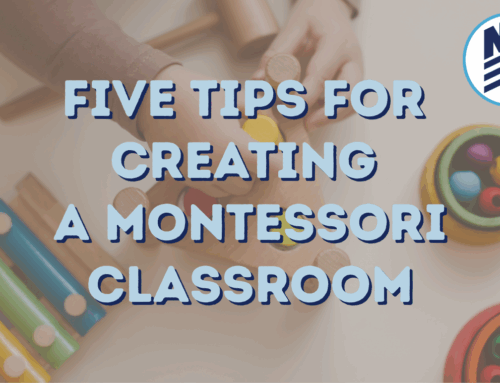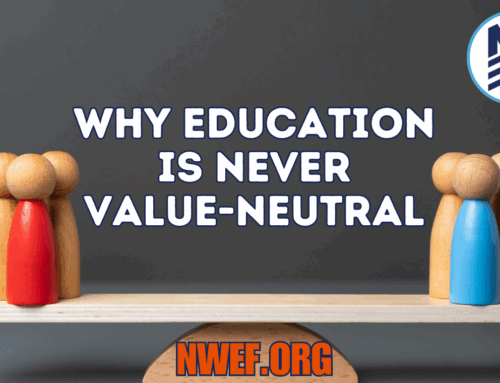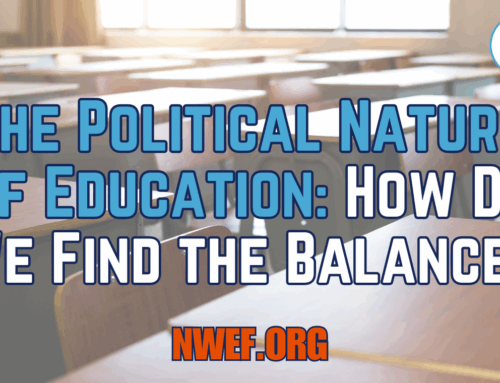
“The function of education is to teach one to think intensively and to think critically. Intelligence plus character – that is the goal of true education.”
– Martin Luther King Jr. –
In his 1828 dictionary, Noah Webster defined instruction as “The act of teaching or informing the understanding in that of which it was before ignorant.”
Since our early days as a nation, Americans have emphasized education for their children. We have long understood that schooling is essential to creating productive members of society.
Few people would say that education is unimportant, but we don’t often give a lot of thought to the quality of instruction in our schools or how to define what makes an education “good.”
Here at the Noah Webster Educational Foundation, we’ve discovered a few key ingredients of quality instruction: it encourages and satisfies curiosity, teaches basic skills, measures knowledge, provides opportunities and creates good citizens.
Let’s look at each of these in a bit more detail…
1. Good instruction stirs and satisfies curiosity.
To educate is to touch and stir the imagination of the human spirit.
When a person is curious, they are automatically more open to learning. Wondering “why” and asking “how does that work” is not only essential to true education, but it makes it a lot more fun too!
Curiosity promotes classroom engagement and helps students retain information longer (because they actually care about what they’ve learned.) Curiosity is also linked to innovative thinking, which in turn encourages students to come up with their own solutions rather than relying on technology or other people to get the answer.
“Asking questions is not simply a means to gather information,” says EdWeek. “Rather, by asking questions, students can identify their own knowledge gaps and think critically about what they are learning, assess information from individuals and other sources of information, think creatively and divergently, and work constructively with others,”
Teachers should provide educational resources that encourage and satisfy their students’ curiosity.
Education should foster critical thinking.
EdWeek also shares that curiosity builds critical thinking skills.
As students develop curiosity about the world, they can be encouraged to question their own perspectives and those of others. With guidance, they can learn to ask better questions as they gain more knowledge over their years in school.
Instruction that teaches how to think instead of what to think leads to a culture of innovation. In this environment, students learn to draw their own conclusions and form their own beliefs. What’s more, they can think through why they have the beliefs they do.
In short, a good education produces curious students who love learning and think independently.
Recommended Reading: Want to help boost your child’s or classroom’s logic level? Check out this great critical thinking book designed for kids! Fallacy Detective: Thirty-Eight Lessons on How to Recognize Bad Reasoning
2. Good instruction teaches basic skills.
Most people would agree that education should at least give students the bare minimum of knowledge they need for adulthood. However, today’s schools are not achieving that goal.
The Center for American Progress shares that in many states, high school graduation is not a guarantee that students are ready to enter college. In fact, Louisiana and Tennessee are the only two states that make sure students meet public university entrance standards before issuing high school diplomas. These states require students to take a 15 credit college preparation course that covers high-level math, English, history, science, and a foreign language.
Basic education involves reading, writing, math, history, philosophy, literature, and the arts and sciences.
If most American schools need to do a better job in teaching basic subjects, what should those subjects be? Here’s what the experts have to say:
Despite a world of increasing technology and complicated ideas, reading, writing, and arithmetic continue to matter. The famous “3 Rs” equip students with the basic tools they need to learn other subjects and master essential life skills.
The Center for American Progress includes a few other subjects in the ideal education mix: “According to the Every Student Succeeds Act (ESSA), a well-rounded education includes the arts, humanities, sciences, social sciences, English, and math. Background knowledge in these subjects allows students to transfer the ability to read into other subjects and experiences…”
3. Good instruction tests a student’s knowledge.
It’s not enough to simply teach essential topics. In order to make sure instruction is effective, there has to be a way to measure how much knowledge a student is absorbing.
That’s why quality instruction requires regular testing or assessments.
Columbia Virtual Academy notes that teachers learn students’ strengths and weaknesses through testing. Test scores reveal gaps in students’ learning and highlight topics that need extra study time.
Assessments should measure a student’s ability to apply knowledge and skill.
However, testing should not simply be a regurgitation of facts. It should also gauge the student’s ability to apply information to make logical arguments or solve real-life problems.
Testing can also develop life skills, says Columbia Virtual Academy. “The more tests students take, the more familiar and comfortable they will feel, and test performance will improve. Performing well under pressure is a skill students will need and will use often as an adult.”
Assessments are for individual student growth, not for a school’s vanity.
Testing should focus on each child as a valuable and important individual. Teacher and administrator Jack Appleby, who has worked in education for nearly 46 years, shares that administrators and politicians often focus on how overall test scores compare between schools. This common approach ignores how each student may have improved or regressed over time.
Instead of viewing grades as a competition between schools or states, testing should be geared toward individual growth. Assessments should not be graded on a curve or otherwise based on the performance of others.
At the end of the school day, the application of knowledge is far more important than memorizing the correct answers, parroting information, or beating the neighboring school’s test scores. Students should know how to use what they have learned—and if they can, that is successful instruction.
4. Good instruction provides opportunity.
A few years ago, NBC News wrote an article discussing whether students are ready for the workforce after high school. They shared thoughts from Michael J. Petrilli, the president of the Thomas B. Fordham Institute: “I think where high schools have gotten it wrong, or let’s be honest, those of us in the policy world have gotten it wrong, is in thinking that high schools’ only job is preparing kids for a four-year liberal arts degree,” he said. “We have probably about 30 to 40 percent of kids who graduate high school ready for a four-year college program and they do OK. But then there’s another probably 30 or 40 percent of kids who aren’t terribly well-prepared, but go to college anyway and end up in remedial classes and drop out. So now they’ve had this failure early in their life and nothing much to show for it.”
Unfortunately, today’s high school graduates are underprepared and underqualified for college and for the workforce. If this is true, what needs to change?
Students should have some marketable skills and be able to enter the workforce.
The second point in this post highlighted the importance of basic skills, which would certainly improve the dropping-out-of-college issue. However, as Mr. Fordham said above, college preparation is not the same as life preparation.
Encouraging students to think about what they want in life (rather than pushing the college experience) is one way to shift more educational emphasis to preparation for adulthood. For example, NPR says that trade jobs are often an underrated option for students after high school.
Perhaps more classroom emphasis on the character and skills needed to be a good employee (and successful adult) would improve outcomes for students, whether they choose to attend college right away or get a job out of high school.
5. Education creates valued members of society
Students should be able to support themselves, nurture others, engage in the community, and add value to society.
It’s a simple fact: educated individuals contribute more to society. Holistic education (that is, education that sees humans as complex and made up of mental, physical, emotional, and spiritual components) recognizes the need for children to be raised in a way that prepares them for living in a community as productive, successful adults.
Pennsylvania State University reports, “Research shows that individuals who graduate and have access to quality education throughout primary and secondary school are more likely to find gainful employment, have stable families, and be active and productive citizens. They are also less likely to commit serious crimes, less likely to place high demands on the public health care system, and less likely to be enrolled in welfare assistance programs.”
Habitat for Humanity also discusses the benefits of education: “It helps people become better citizens, get a better-paid job, shows the difference between good and bad. Education shows us the importance of hard work and, at the same time, helps us grow and develop. Thus, we are able to shape a better society to live in by knowing and respecting rights, laws, and regulations.”
Our nation’s founding fathers often wrote of the importance of education to good citizenship and even the protection of freedom. Samuel Adams wrote, “If virtue and knowledge are diffused among the People, they will never be enslav’d. This will be their great Security.”
In summary, proper instruction produces good citizens who make positive changes in their communities and, ultimately, the world.
Read more: How to Teach Kids to Be Involved Citizens
How can we ensure that today’s schools follow these principles?
Want to make sure your kids receive this kind of instruction? You can be the one to make a difference in your local school—and the Noah Webster Educational Foundation is here to help you!
Follow our blog to find resources to help you speak to your local school board and learn how you can impact your local education policies. We hope you’ll take the time to learn more and help make the change in education that we’re all looking for.





[…] and even respectful debate. Show them how to articulate their position diplomatically. Teach them critical thinking skills so they can do the research themselves and draw independent […]
[…] As parents, we have the tremendous responsibility of molding new little people into well-rounded, responsible, independent, high-quality adults. Parents are responsible for being “where the buck stops” for their children. Other adults in their life can have an impact, but parents have the specific responsibility of ensuring that their children are cared for and brought up well. […]
[…] time has progressed, students are faced with more and more information being crammed into that old structure. “Today, we have a lot more that we’re trying to have […]
[…] time has progressed, students are faced with more and more information being crammed into that old structure. “Today, we have a lot more that we’re trying to have […]
[…] Learn more about what good school instruction looks like. […]
[…] As parents, we have the tremendous responsibility of molding new little people into well-rounded, responsible, independent, high-quality adults. Parents are responsible for being “where the buck stops” for their children. Other adults in their life can have an impact, but parents have the specific responsibility of ensuring that their children are cared for and brought up well. […]